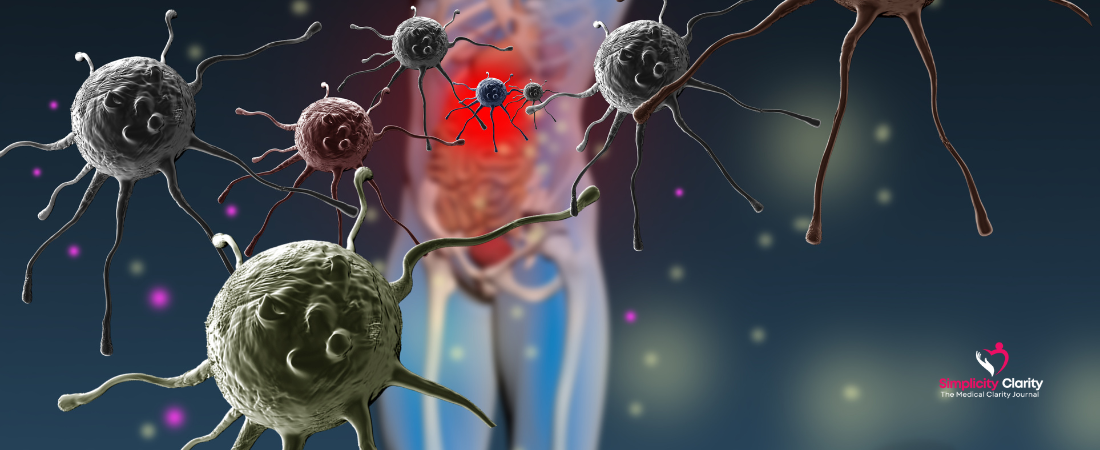
Can I Live with Autoimmune Disease?
- June 6, 2025
- 1 Like
- 478 Views
- 0 Comments
Abstract
Autoimmune diseases are chronic, lifelong conditions in which the immune system mistakenly attacks the body’s own tissues. Affecting over 400 million people worldwide, these conditions vary widely in terms of symptoms, severity, and treatment options. This paper explores the pathophysiology, classification, symptoms, and treatments of autoimmune diseases and addresses the critical question: Can individuals live fulfilling lives despite a diagnosis? Through global case studies and medical research, the paper offers a comprehensive overview to inform patients, caregivers, and healthcare providers.
Autoimmune diseases are among the most complex and challenging medical conditions faced by patients and clinicians alike. Their chronic nature, varied clinical manifestations, and the personal burden they impose demand a multidisciplinary and adaptive approach to care. While these diseases are incurable, patients can often manage their symptoms and achieve long-term stability through personalized treatment plans, lifestyle modifications, and psychosocial support. This paper delves into the underlying biological mechanisms that trigger autoimmune responses, discusses major disease types, and evaluates current and emerging therapies. Additionally, it incorporates real-world case studies from diverse global settings to illustrate both the challenges and opportunities in living with autoimmune disease. Ultimately, the paper aims to offer hope and clarity, demonstrating that with access to proper care and community support, people with autoimmune diseases can lead full and meaningful lives.
Introduction
Autoimmune diseases comprise more than 80 distinct disorders, ranging from common conditions like type 1 diabetes and rheumatoid arthritis to rare diseases such as systemic sclerosis. These disorders affect individuals across age groups, geographies, and ethnicities. While the etiology is multifactorial, involving genetic, environmental, and hormonal components, the underlying mechanism is a dysregulated immune response against self-antigens. The chronic nature of these diseases necessitates lifelong management. Despite this, with appropriate care, many individuals maintain high quality of life.
Globally, autoimmune conditions account for a significant proportion of morbidity, particularly among women of reproductive age, who are disproportionately affected. Understanding the root causes and individual variations is essential to tailoring effective interventions. Recent advances in immunology, genetics, and biotechnology have vastly improved diagnosis and treatment options. Furthermore, the integration of traditional medicine, mental health care, and digital health platforms has created new possibilities for holistic patient management. Awareness, patient empowerment, and equitable healthcare access remain key to improving outcomes for millions living with these diseases around the world.

Pathophysiology of Autoimmune Diseases
Autoimmune diseases result from a breakdown in immune tolerance. Normally, the immune system distinguishes self from non-self, targeting pathogens while sparing host tissues. In autoimmune diseases, this discrimination fails, leading to the production of autoantibodies or autoreactive T cells that target healthy cells. This aberrant immune activity triggers inflammation and tissue damage.
Several mechanisms contribute to this dysregulation:
- Genetic predisposition: Variants in genes such as HLA (human leukocyte antigen) are strongly associated with susceptibility. Genome-wide association studies (GWAS) have identified multiple loci linked to specific autoimmune diseases, highlighting complex polygenic contributions.
- Environmental triggers: Infections, stress, toxins, smoking, and dietary components may initiate or exacerbate autoimmune responses. For example, Epstein-Barr virus has been linked to multiple sclerosis, while gluten exposure is critical in celiac disease.
- Hormonal factors: Autoimmune diseases are more prevalent in women, particularly during childbearing years, suggesting estrogen and other hormonal influences may modulate immune activity and contribute to disease expression.
Recent studies also highlight the role of microbiome imbalance (dysbiosis), chronic inflammation, and molecular mimicry in disease onset. Additionally, regulatory T cells (Tregs), normally tasked with suppressing immune responses against self, are often deficient or dysfunctional in autoimmune patients, further promoting disease activity.
Types of Autoimmune Diseases
Autoimmune diseases can be broadly categorized into:
- Organ-specific diseases, where immune responses target a single organ (e.g., Hashimoto’s thyroiditis, type 1 diabetes, Graves’ disease). These diseases typically involve targeted destruction of one tissue type, often leading to irreversible damage if untreated.
- Systemic diseases, which affect multiple systems (e.g., systemic lupus erythematosus [SLE], rheumatoid arthritis, systemic sclerosis). These often involve widespread inflammation, immune complex deposition, and multiorgan complications.
Examples of other significant autoimmune diseases include:
- Multiple Sclerosis (MS): Affects the central nervous system, leading to neurological impairment.
- Psoriasis and Psoriatic Arthritis: Involves skin and joints.
- Inflammatory Bowel Diseases (IBD): Such as Crohn’s disease and ulcerative colitis, affecting the gastrointestinal tract.
Symptoms and Diagnosis
Symptoms vary depending on the specific disease but often include fatigue, joint pain, skin rashes, fever, and organ-specific signs such as thyroid dysfunction or blood sugar irregularities. Some diseases, like lupus, may have a relapsing-remitting course, while others, like rheumatoid arthritis, may follow a more progressive pattern.
Diagnosis typically involves a combination of:
- Clinical evaluation: History and physical examination to detect patterns of multisystem involvement.
- Serological tests: Including ANA (antinuclear antibodies), RF (rheumatoid factor), anti-CCP, anti-dsDNA, and others.
- Imaging: MRI, ultrasound, or CT scans to assess organ involvement.
- Biopsy: Sometimes required for confirmation, particularly in cases of vasculitis or suspected autoimmune hepatitis.
Early diagnosis is crucial to prevent irreversible organ damage and improve long-term outcomes. However, in many regions, especially in low-resource settings, diagnostic delays are common due to limited access to specialists and laboratory services.
Case Studies
Case 1: Maria from Spain (Systemic Lupus Erythematosus)
Maria, a 32-year-old teacher from Madrid, was diagnosed with SLE after experiencing recurrent joint pain and photosensitivity. Laboratory tests revealed elevated ANA and anti-dsDNA antibodies. With corticosteroids and hydroxychloroquine, her symptoms were controlled. She now manages flares with early intervention and maintains a full-time job. Her story emphasizes the importance of patient education, early treatment, and supportive workplace policies.
Case 2: Arjun from India (Type 1 Diabetes Mellitus)
Arjun, diagnosed at age 12, has been managing his condition with insulin therapy, regular monitoring, and lifestyle changes. Now 25, he is pursuing a career in biomedical engineering. His story exemplifies how effective disease education and access to care enable individuals to thrive. Mobile health apps and teleconsultations have helped Arjun stay consistent with his management plan, especially during the COVID-19 pandemic.
Case 3: Aisha from Nigeria (Rheumatoid Arthritis)
Aisha, 45, began experiencing joint stiffness and fatigue. Early intervention with DMARDs (Disease-Modifying Anti-Rheumatic Drugs) helped prevent severe joint deformity. She also uses herbal medicine alongside conventional therapy, illustrating culturally integrated approaches to care. Aisha’s case underscores the role of traditional healers and the potential benefits of integrating modern medicine with indigenous practices in community-based care models.
Treatment and Management
There is no cure for autoimmune diseases, but many are manageable. Common treatment strategies include:
- Immunosuppressive therapy: Corticosteroids, methotrexate, azathioprine, and other agents suppress overactive immune responses and reduce inflammation.
- Biologic agents: TNF inhibitors (e.g., adalimumab), IL-6 blockers (e.g., tocilizumab), B-cell depletion therapy (rituximab), and JAK inhibitors represent targeted therapies that have revolutionized management.
- Supportive therapies: Pain management, physical and occupational therapy, psychological counseling, and nutritional support can improve quality of life.
- Lifestyle modifications: Diet, stress reduction, regular exercise, and adequate sleep are vital components of daily management and can help reduce flare frequency and severity.
Recent trends include personalized medicine, with treatment plans tailored to genetic, immunological, and lifestyle factors. In addition, digital health tools, including wearable devices and patient apps, are enhancing self-monitoring and physician-patient collaboration.
Living with Autoimmune Disease
Yes, it is possible to live—and thrive—with autoimmune disease. Key components of successful long-term management include:
- Early diagnosis and intervention
- Multidisciplinary care: Collaboration among rheumatologists, endocrinologists, neurologists, dietitians, and mental health professionals.
- Patient education and support networks: Empowered patients are more likely to adhere to treatments and maintain positive outlooks.
- Access to healthcare services and medication: Consistent access is critical to long-term stability.
Psychosocial support, family engagement, and mental health services can also help patients cope with the emotional toll of chronic disease. Participation in advocacy groups and awareness campaigns often fosters a sense of purpose and community.
Global Disparities and Access
Challenges persist in low- and middle-income countries due to limited access to diagnostic tools, specialists, and biologic therapies. Moreover, sociocultural beliefs and stigma may delay care-seeking behavior. International collaboration, policy reform, and health education are essential for equity in autoimmune disease management.
Efforts by organizations such as the World Health Organization (WHO), international rheumatology societies, and nonprofit groups are working to reduce these disparities by training healthcare workers, funding research, and improving supply chains for medications and diagnostics.
Conclusion
Autoimmune diseases, while chronic and potentially debilitating, are not a death sentence. Advances in medicine, global awareness, and holistic care models empower individuals to lead meaningful lives. Living with an autoimmune disease involves ongoing adaptation, resilience, and comprehensive medical support—but it is unquestionably possible.
This paper reaffirms that autoimmune patients can thrive with timely diagnosis, evidence-based care, and sustained support. Recognizing and addressing healthcare disparities remains a global imperative to ensure that people living with autoimmune diseases everywhere have the opportunity to reach their full potential.
References
American Autoimmune Related Diseases Association. (2023). Understanding autoimmune disease. https://www.aarda.org
Davidson, A., & Diamond, B. (2021). Autoimmune diseases. The New England Journal of Medicine, 384(1), 65–74. https://doi.org/10.1056/NEJMra1103466
Fairweather, D., Frisancho-Kiss, S., & Rose, N. R. (2008). Sex differences in autoimmune disease from a pathological perspective. The American Journal of Pathology, 173(3), 600–609. https://doi.org/10.2353/ajpath.2008.071008
Kumar, V., Abbas, A. K., & Aster, J. C. (2022). Robbins and Cotran pathologic basis of disease (10th ed.). Elsevier.
Mayo Clinic. (2023). Autoimmune disease: Symptoms and causes. https://www.mayoclinic.org/diseases-conditions/autoimmune-disease/symptoms-causes/syc-20369014
National Institutes of Health. (2023). Autoimmune diseases. https://www.niams.nih.gov/health-topics/autoimmune-diseases
Rose, N. R., & Mackay, I. R. (2019). The autoimmune diseases (6th ed.). Academic Press.
Smith, J. D., & Brown, A. K. (2021). Immunopathogenesis of systemic autoimmune diseases. Journal of Autoimmunity, 112, 102501. https://doi.org/10.1016/j.jaut.2020.102501
World Health Organization. (2022). Global burden of autoimmune diseases and strategies for prevention. https://www.who.int/publications/i/item/autoimmune-burden-report-2022



Leave Your Comment